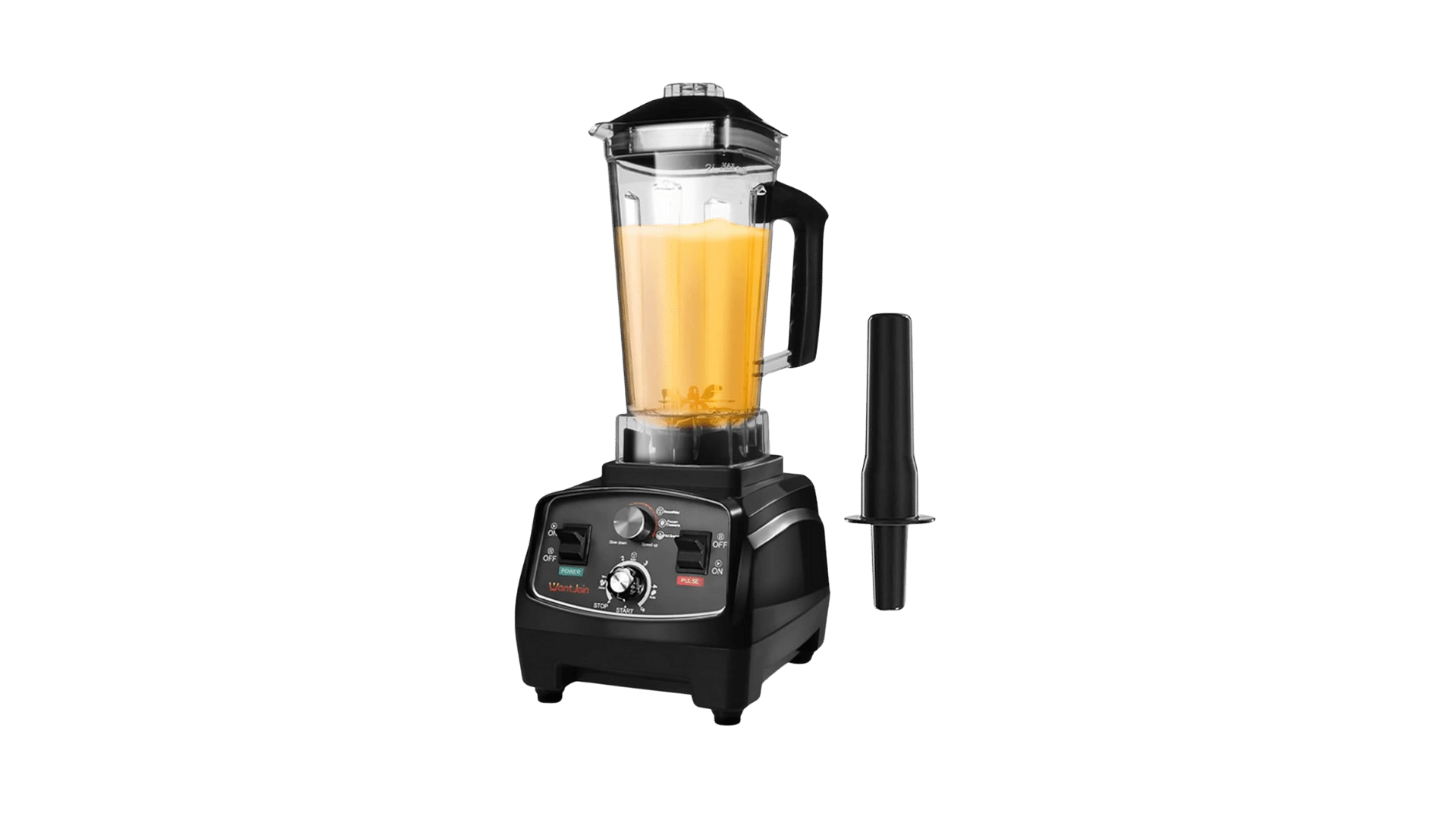
|
This post may contain affiliate links, which means that we may receive a commission if you make a purchase using these links. As an Amazon Associate, we earn commission from qualifying purchases.
A blender is an indispensable kitchen appliance, ideal for creating smoothies, soups, sauces, and much more. With a wide range of options available, choosing the best blender can be daunting.
This guide will help you navigate the key factors to consider, ensuring you select the perfect blender for your culinary needs.
Types of Blenders
Blenders come in several types, each suited to different tasks. Understanding these types will help you decide which one best fits your needs.
– Countertop Blenders : These are versatile and powerful, suitable for a wide range of tasks from blending smoothies to crushing ice. They come with a variety of features and sizes, making them a staple in many kitchens.
– Personal Blenders : Designed for single servings, personal blenders are compact and convenient. They are perfect for making smoothies or shakes on the go and often come with travel-friendly cups.
– Immersion Blenders : Also known as hand blenders, these are handheld devices perfect for blending soups, sauces, and other liquids directly in the pot. They are easy to use and clean, making them a favorite for quick tasks.
– High-Performance Blenders : These powerful blenders are designed for heavy-duty tasks, such as making nut butter, grinding grains, or emulsifying sauces. They are typically more expensive but offer superior performance and durability.
Power and Motor Strength
The power of a blender, measured in watts or horsepower, is a crucial factor in its performance.
– Wattage: Most household blenders range from 300 to 1,500 watts. Higher wattage means more power, which translates to better performance, especially for tough tasks like crushing ice or blending fibrous vegetables.
– Motor Strength: High-performance blenders often boast motors of 2 horsepower or more, ensuring they can handle demanding tasks with ease. Look for blenders with strong, durable motors for long-lasting use.
Blades and Blending Performance
The quality and design of the blades significantly impact blending efficiency and consistency.
– Blade Material: Stainless steel blades are the best choice for durability and rust resistance. They maintain sharpness over time and handle a variety of ingredients effectively.
– Blade Design: Look for blenders with multi-pronged, angled blades that create a vortex, pulling ingredients down for thorough blending. Some blenders feature detachable blades for easier cleaning.
Jar Material and Capacity
The material and size of the blending jar affect the blender’s usability and durability.
– Jar Material: Common materials include glass, plastic, and stainless steel. Glass jars are sturdy and resistant to staining, but they can be heavy and prone to breaking. Plastic jars are lightweight and shatterproof, but they can absorb odors and stains. Stainless steel jars are durable and stylish but are opaque, so you can’t see the contents while blending.
– Capacity: Consider your typical blending volume. For families or batch cooking, a larger capacity (64 ounces or more) is ideal. Personal blenders often have smaller jars (12-20 ounces), suitable for single servings.
Speed Settings and Controls
Blenders come with various speed settings and control options, affecting their versatility and ease of use.
– Variable Speeds: Blenders with multiple speed settings offer greater control over the blending process. This allows you to adjust the speed for different textures, from chunky salsa to smooth puree.
– Pulse Function: A pulse function gives you short bursts of power, ideal for tasks requiring precision, like chopping nuts or creating chunky salsas.
– Pre-Programmed Settings: Some blenders come with pre-programmed settings for specific tasks, such as smoothies, ice crushing, or soup making. These take the guesswork out of blending and provide consistent results.
Ease of Cleaning
A blender that’s easy to clean will save you time and effort.
– Dishwasher Safe: Look for blenders with dishwasher-safe components, such as the jar, lid, and blades. This makes cleanup quick and convenient.
– Detachable Parts: Blenders with detachable blades and jars are easier to clean thoroughly, preventing food buildup and maintaining hygiene.
Durability and Warranty
Investing in a durable blender ensures long-term use and reliable performance.
– Construction Quality: High-quality materials and sturdy construction contribute to a blender’s durability. Look for reinforced plastic or metal bases and secure, leak-proof lids.
– Warranty: A good warranty indicates the manufacturer’s confidence in their product. High-performance blenders often come with extended warranties (5-10 years), covering motor and parts.
Noise Level
Blenders can be noisy, which might be a concern if you have a sensitive household.
– Noise Reduction Features: Some blenders come with noise-dampening technology or enclosures to reduce noise. These are beneficial if you blend early in the morning or late at night.
Budget Considerations
Blenders come in a wide price range. Setting a budget helps narrow down your options.
– Basic vs. Premium: Basic blenders are affordable and suitable for everyday tasks like making smoothies or pureeing soups. Premium blenders, often high-performance models, offer advanced features and superior durability but come at a higher cost.
– Value for Money: Consider the features and performance in relation to the price. A slightly more expensive blender with better performance and durability might offer better long-term value.
Conclusion
Choosing the best blender involves considering the type, power, blade quality, jar material and capacity, speed settings, ease of cleaning, durability, noise level, and budget.
By evaluating these factors, you can select a blender that meets your specific needs and enhances your culinary experience, making everything from smoothies to soups effortlessly delicious.
